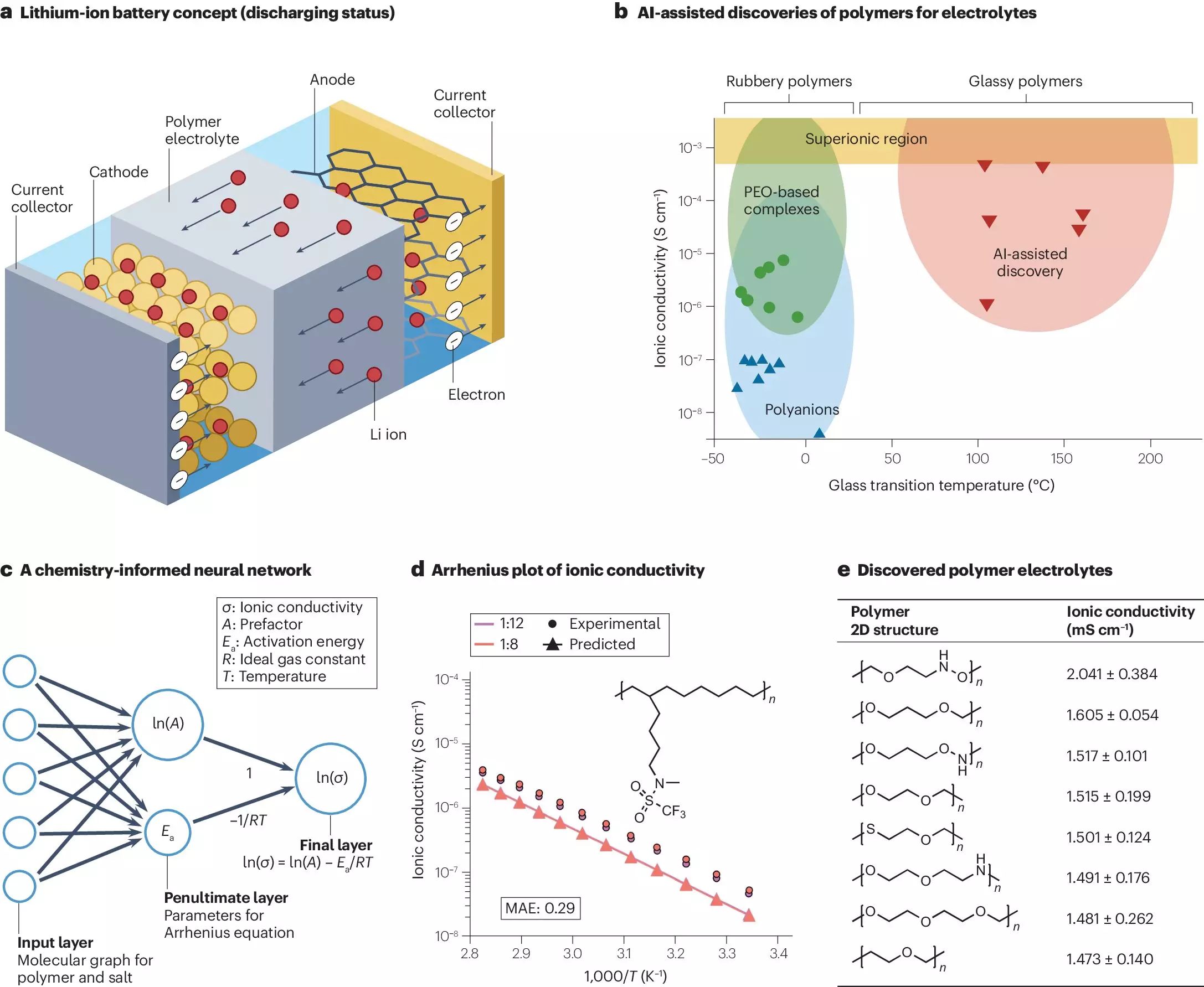Polymers are essential components that underpin an astonishing range of modern technologies, from non-stick frying pans to cutting-edge 3D printing applications. As the materials underpinning countless innovations in electronics, energy, and sustainability evolve, so too does the quest for next-generation polymers. Researchers at Georgia Tech, led by Professor Rampi Ramprasad, are breaking new ground by integrating artificial intelligence (AI) into their polymer discovery process, marking a transformative shift in materials science.
The Emergence of AI in Polymer Research
The utilization of AI in material science is a relatively recent development, gaining momentum after the U.S. government’s Materials Genome Initiative was launched over ten years ago. Initially, research was fueled by curiosity rather than a clear pathway to practical applications. However, in recent years, as highlighted by two significant papers published in high-impact journals earlier this summer, the narrative is shifting towards tangible successes. These studies document groundbreaking advancements in polymer design relevant to energy storage, filtration, and recyclable materials, signifying an inspiring epoch in polymer informatics.
One of the critical insights from Ramprasad’s team is their ability to develop and adapt machine learning algorithms that predict polymer properties and formulations before physical synthesis. This paradigm shift allows researchers to define specific performance criteria tailored to different applications. Having succinctly trained their models on existing datasets, the AI can forecast which combinations of materials might meet the desired specifications, thereby enhancing the efficiency of material discovery.
The initial framework set by Ramprasad’s team not only streamlines the design process but also iterates upon it. The data collected from laboratory testing of newly synthesized polymers is integrated back into the AI models, creating a cyclical learning process that refines predictions with each iteration. This agility allows researchers to explore a wider array of materials quickly, aligning with the dynamic needs of various industries.
One exemplary case discussed in their recent publications is the design of capacitors, particularly relevant to electric and hybrid vehicles. In traditional approaches, researchers grappled with a significant trade-off: polymers that provided high energy density often lacked thermal stability, and vice versa. However, leveraging AI capabilities, Ramprasad’s team identified that materials composed from polynorbornene and polyimide not only satisfied both criteria but also proved suitable for demanding applications like aerospace, fostering increased efficiency without compromising environmental responsibility.
The Challenges of Implementing AI in Material Science
While the prospects for AI in polymer discovery are undoubtedly promising, the journey is fraught with challenges. A primary hurdle lies in the reliance on extensive and high-quality datasets. The effectiveness of AI predictions hinges on the availability of comprehensive material-property information which, when lacking, can undermine the algorithms’ reliability.
Additionally, the algorithms must balance complexity with usability to ensure that the generated polymers are chemically realistic and capable of being synthesized in a laboratory setting. The transition from algorithmic design to practical application necessitates rigorous validation of these predictions, particularly around scalability for real-world usage. Collaborations across institutions, such as those with researchers at the University of Connecticut, play a crucial role in overcoming these hurdles and establishing a cohesive bridge between theoretical models and practical success.
The collaboration between academia and industry is vital for enhancing the applicability of AI-driven materials research. Insights gleaned from the Nature Reviews Materials paper involve co-authors from notable organizations like Toyota Research Institute and General Electric. This level of involvement underscores the growing recognition of AI’s promise within industrial realms.
To further this synergy, Ramprasad’s effort in co-founding Matmerize Inc, a startup harnessing cloud-based polymer informatics tools, bridges the gap between theoretical research and commercial application. Companies across various sectors, from electronics to sustainable materials, are capitalizing on the capabilities of Matmerize’s platform, allowing for efficient and cost-effective design solutions. These tools not only promise to expedite research but also democratize access to advanced materials innovation.
The future of polymer science is entering an exhilarating phase, driven by the intersection of artificial intelligence and material discovery. The success stories emerging from Georgia Tech’s research initiatives offer a blueprint for how new materials can be conceived, tested, and ultimately deployed in transformative ways. As collaborations deepen and research accelerates, the potential to harness AI in the search for revolutionary polymers paves the way for innovations that can redefine industries and improve everyday lives across the globe. The journey that started with algorithms predicting properties has now evolved into tangible solutions poised to address some of the most pressing challenges facing modern society.


Leave a Reply